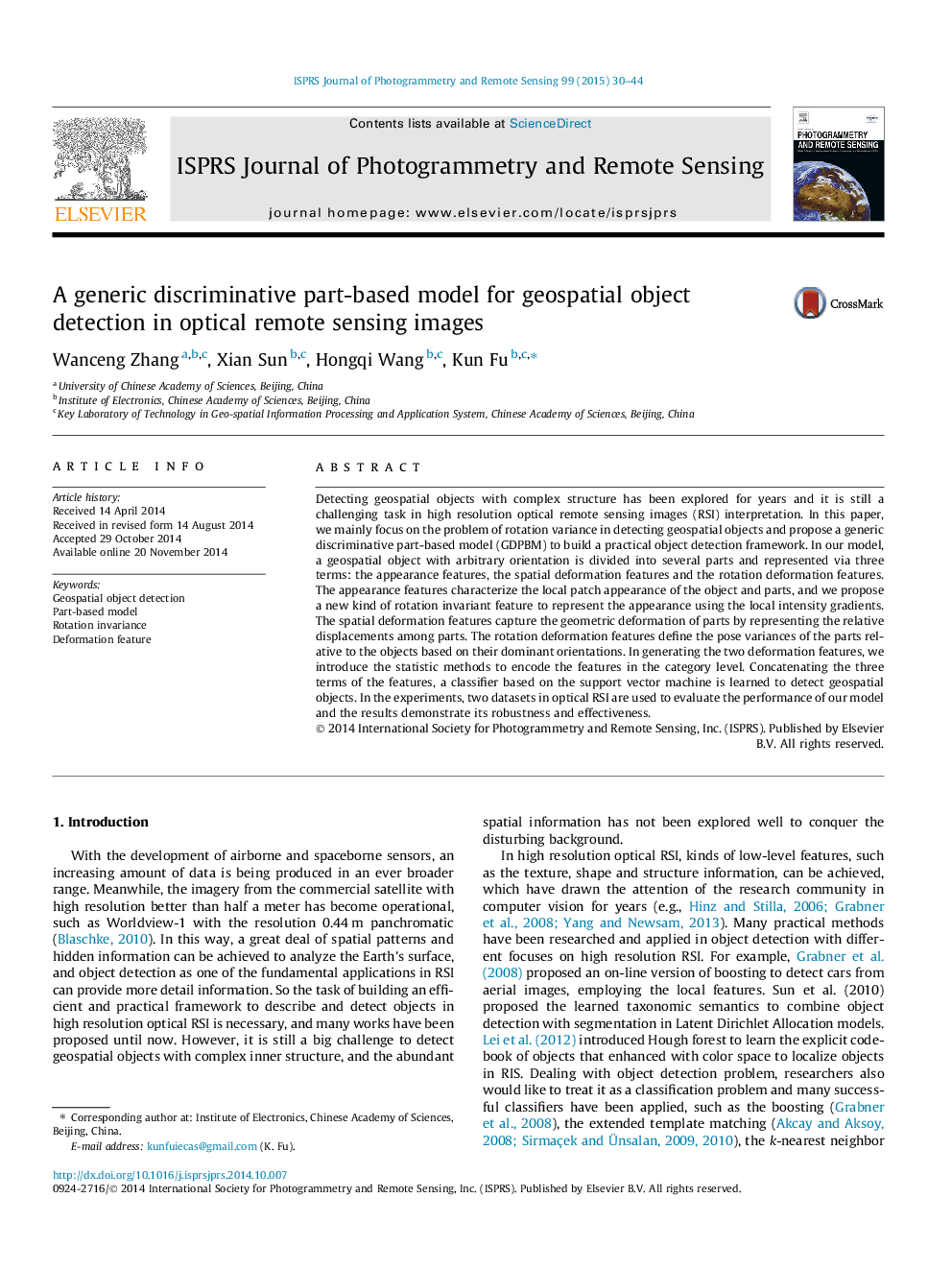| Article ID | Journal | Published Year | Pages | File Type |
|---|---|---|---|---|
| 554958 | ISPRS Journal of Photogrammetry and Remote Sensing | 2015 | 15 Pages |
Detecting geospatial objects with complex structure has been explored for years and it is still a challenging task in high resolution optical remote sensing images (RSI) interpretation. In this paper, we mainly focus on the problem of rotation variance in detecting geospatial objects and propose a generic discriminative part-based model (GDPBM) to build a practical object detection framework. In our model, a geospatial object with arbitrary orientation is divided into several parts and represented via three terms: the appearance features, the spatial deformation features and the rotation deformation features. The appearance features characterize the local patch appearance of the object and parts, and we propose a new kind of rotation invariant feature to represent the appearance using the local intensity gradients. The spatial deformation features capture the geometric deformation of parts by representing the relative displacements among parts. The rotation deformation features define the pose variances of the parts relative to the objects based on their dominant orientations. In generating the two deformation features, we introduce the statistic methods to encode the features in the category level. Concatenating the three terms of the features, a classifier based on the support vector machine is learned to detect geospatial objects. In the experiments, two datasets in optical RSI are used to evaluate the performance of our model and the results demonstrate its robustness and effectiveness.
